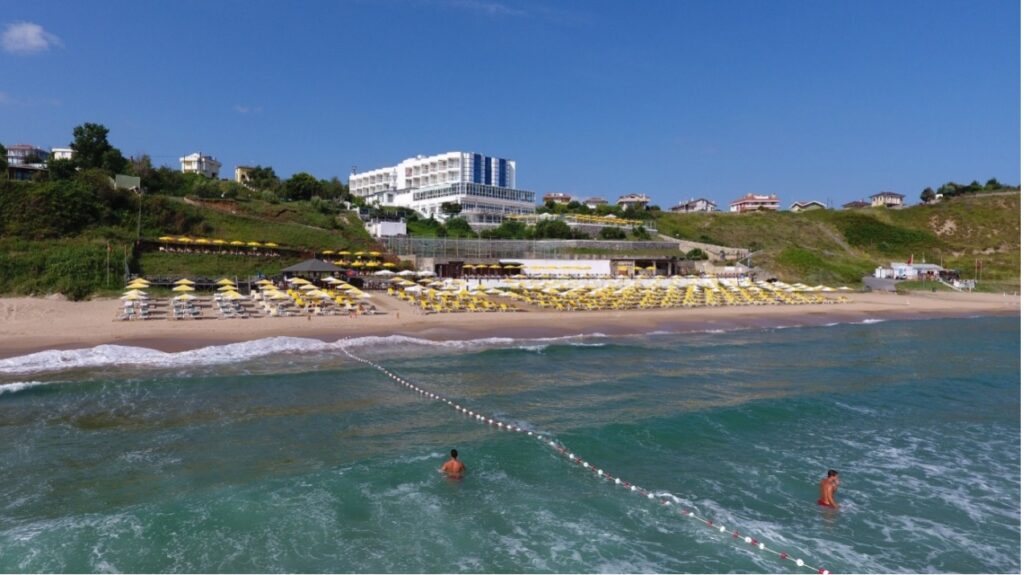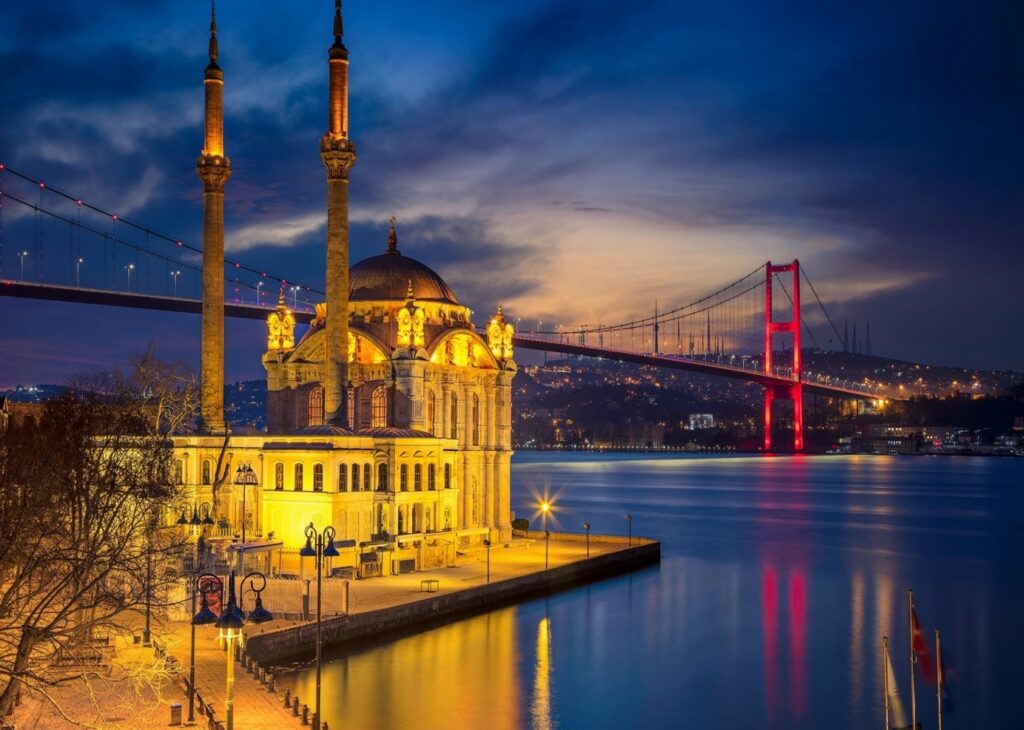There are many reasons to visit Istanbul: First of all it’s the only city in the World, which lies on two continents, and where Orient and Occident are melted together. The French author Alphonse de Lamartine wrote about Istanbul: ‘If one were allowed a single last glimpse of the world, one should have to come and see Istanbul. Even if most Turks , you meet during your journey, can’t speak foreign languages, they are friendly and you will find persons who are ready to help you to make yourself understood. Istanbul was once the capital of the Eastern Roman Empire and the Ottoman Empire. The variety of Istanbul impresses the visitors: museums, cathedrals, mosques, picturesque palaces, pulsating market places, splendid and crowded restaurants and tea rooms aswell as modern trends shopping centers which tower above the city. The view from a hill of the Bosborus strait is worth a journey. The sea connections between different parts of the city work well and you can escape the traffic jam.
THE HISTORICAL PENİNSULA OF THE EUROPEAN PART OF ISTANBUL: (You need at least one day to explore this part of Istanbul) The most important places of interest in Istanbul are in Sarayburnu and Sultanahmet, regions in the center of the Historic Peninsula. This part of Istanbul is bordered in the South by the Marmara sea, in the East by the Bosborus strait and in the North by the Golden Horn. During the Roman Empire, Byzantine and Ottoman Epochs, the heart of the city was always this region where the palaces of the emperors were built. The biggest churches, the most glorious mosques and the greatest museums of the city are in this area. The Sultan Ahmet Mosque is the most splendid mosque of Istanbul. (built in the 17th century).On the opposite you see the Haghia Sofia Museum (the church was built in the 6th century). İt contents mosaic pictures of Jesus Christ, the Virgin Mary, John the Baptist and other saints and different emperors. You see the Hippodrom between the Sultan Ahmet mosque and the Hagia Sofia Museum. The horse-drawn-carriage race took place in the Hippodrom. There you can see also The Egyptian Obelisk, built about 1500 before Christ. Further architectural achievement is the Sultan Suleyman Mosque (built in the 16th century), which was constructed by Architect Sinan. Not far from it, you see the St. Irene Church, which was built in the 5th century and is the second largest Church of the Byzantine Epoch. Nowadays there are concerts of classical music in this church, because the acoustics of the church are wonderful.
The Topkapı Palace (built in the 15th century) which is on a dominant hill in front of the Bosborus, was the political authority center of the Empire. A further historical object of interest is the large Byzantine Yerebatan Cistern (built in the 6th century). We recommend to visit the Chora Museum which was built in the 11th century. The mosaic pictures represents periods of the life of Jesus Christ and the Virgin Mary. The Metro-connections of Istanbul allow a high mobility for every traveller even if the traffic is crowded and slow.
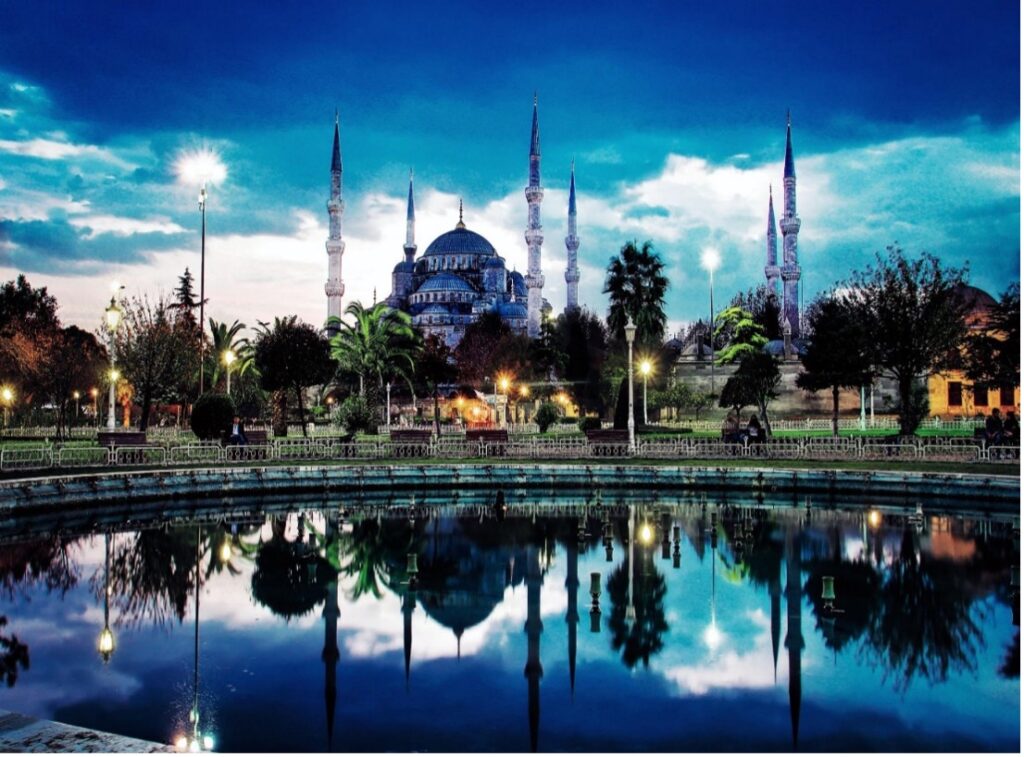
A special mystic mosque is the Eyüp Mosque (built in the 15th century) where you hear the acoustic voice of the pigeons. The covered Bazaars Mısır Çarşısı (Egyptian Bazaar) and the Kapalı Çarşı (Kapali Çarşı Bazaar) were the shopping centers of the Ottoman Empire, where there was a row of shops which sold precious stones, copper goods and clothes. The beautiful Bulgarian Orthodox Church is at the Golden Horn “river”. Up the hill in Eyüb in front of the Golden Horn you will find the famous tea and coffee houses which the well-known French author Pierre Loti visited from time to time. Now the coffee and tea-garden has the name of the French author: Pierre Loti Kahvesi.
THE NEW EUROPEAN SIDE OF ISTANBUL: (You need also a day to see all the objects of interest in this area) When you walk from the South peninsula of the European side over the Galata Bridge (built İn the 19th century) or the Unkapanı Bridge to the North peninsula of the European side, you will see the Galata Tower (built in the 13th century in Romanic Style by the Genoes) and with the second eldest Underground metro of Europe you will reach in few minutes Beyoğlu, where you can walk through the famous shopping and entertainment-street, the İstiklal Caddesi, where it is forbidden to go by car. Here you can find plenty of houses which are built in European Rococo and New-Baroque Style. You can have a meal in the famous restaurants quarter Çiçek Pasajı. The İstiklal Caddesi ends at the Taksim Square, where the large hotels, the concert hall and the open air theatre are. If you take the new underground metro in Taksim, you can visit the quarters in the North of the town like Şişli, Levent , Ulus, and Etiler with its excellent restaurants and bars.
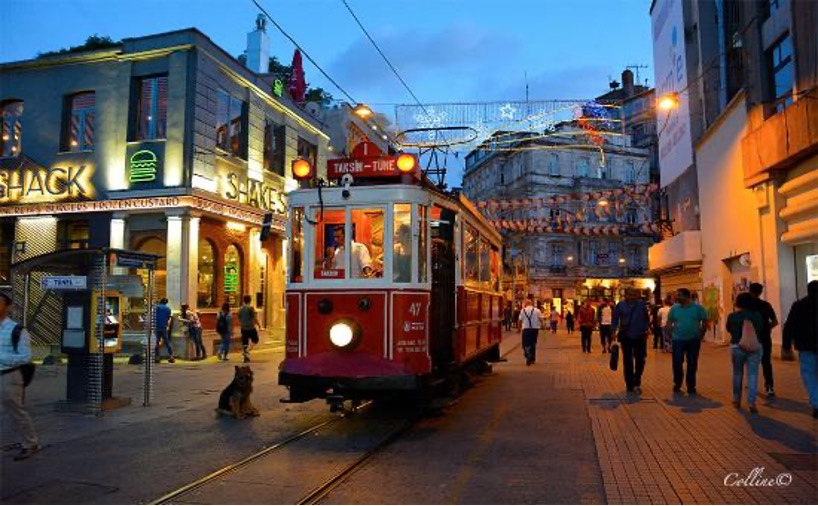
The famous Dolmabahçe Palace is situated in the North peninsula of the European side, which was the Headquarter of the political activities of the Sultans in the 19th century. This building was built in the 19th century in Rococo Style. The peninsula where the Dolmabahçe Palace is situated, is bordered in the North by the Black Sea in the East by the Bosborus and in the South by the Golden Horn. Near the Dolmbahçe Palace, there is the Dolmabahçe Mosque , which is also built in Rococo Style in the same century. The Çırağan Palace was built in the same style and is near the Dolmabaçe Palace. Now it is used as a five star hotel of the Kempinsky Hotel Group.
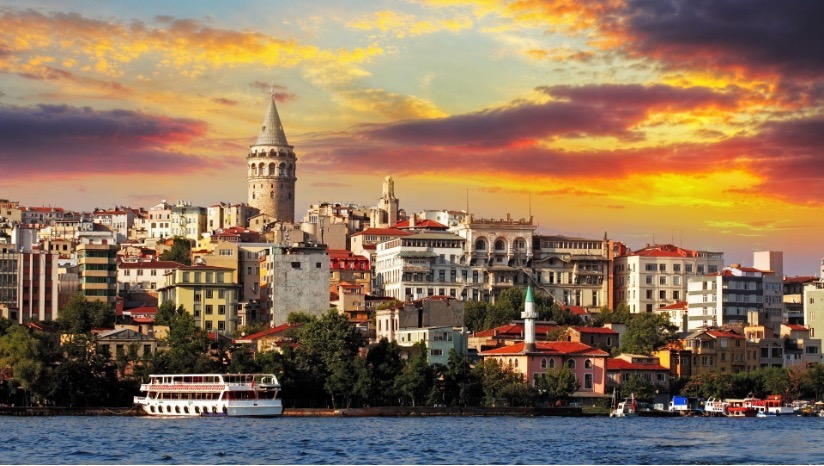
THE BOSBORUS (STRAIT) BETWEEN EUROPE AND ASIA : (You must reserve a day to see the Bosborus strait) Three Highway bridges connect Europe and Asia: The Atatürk bridge and The Fatih Sultan Mehmet bridge. İt’s also planned a metro tunnel under the Bosborus strait to connect both continents with fast Metro Trains.You shouldn’t miss a trip by the ship which goes in zigzag course to the North along the Bosborus to the Black Sea and return in the same way to the South to the start station. You will see picturesque landscapes, and houses,beautiful restaurants. The ship stops also at Ortaköy during the trip. There, you can find churches, mosques and synagogues side by side and the bazaar for presents and the tea gardens where the intellectuals of Turkey meet, are at the seaside.
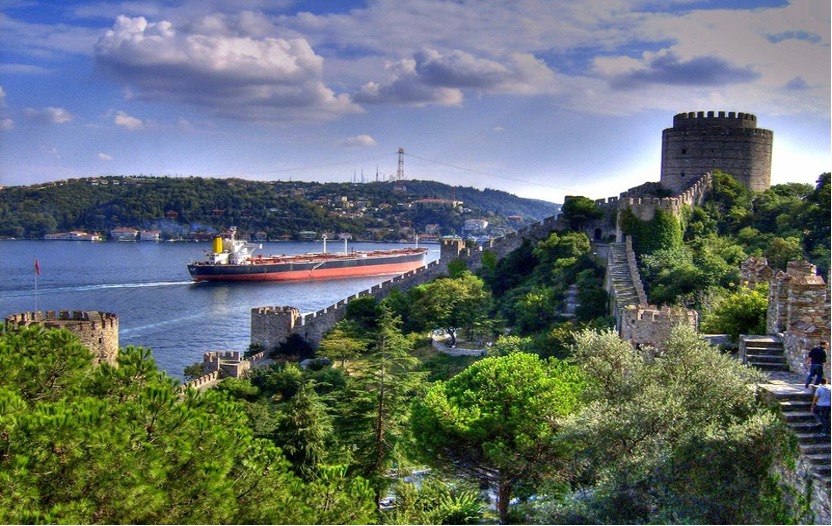
If you continue to go to the North side you will see the Rumeli Hisarı (Rumeli Fortress, built in the 15th century) on the European side and The Anadolu Hisarı (Anadolu Fortress also built in the 15th century). Both fortresses were built by the Ottomans to control the sea . İf you go more to the North side you will see on the European side Sarıyer and Rumeli Kavağı and on the Asian side Anadolu Kavağı with its nice restaurants on the coast. If you go to the South direction of Anadolu Kavağı you will see the Palace of Beylerbeyi and the Palace Göksu,which are built in the Rococo style in the 19th century. İf you go by car from Sarıyer to the Black Sea, you will arrive at the beaches of Kilyos. İn the South of Kilyos there are the Belgrad Ormanları (Belgrad Forests), an important park area of Istanbul. There you can find the Moğlova and Sultan Suleyman aquaeducts.
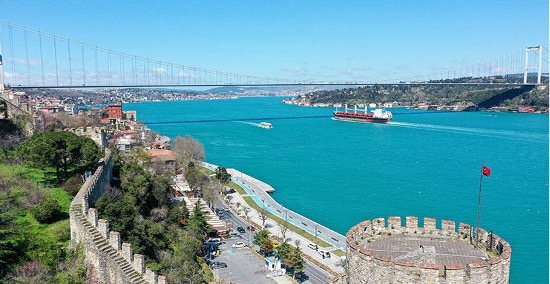
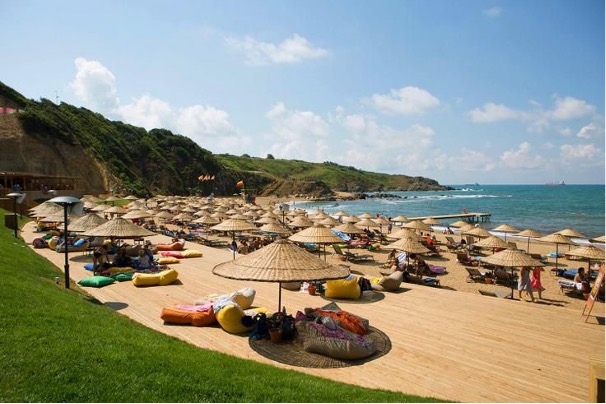
THE ASIAN SİDE: (You need at least one day to visit this area) The sea traffic connections in Istanbul are good and when you use them you can escape the crowded and slow traffic of the rush hours. Kadıköy is in the South of the Asian side of Istanbul. İt has sea transport stations, a yacht harbour and large shopping-streets and boulevards. The most famous shopping and entertainment street is the Bağdat Caddesi (Bagdad avenue). A walk in Moda, a visit of its tea gardens and restaurants, on the hill of Kadıköy with a wonderful view to the Marmara Sea and a walk in the parks of Fenerbahçe must be part of a visit program. İf you drive from Kadıköy to the North, you will come to the railway station of Haydarpaşa , which was built in the German New Baroque Style. There, you can also see the port .After the port when you drive to the North direction, you can sit in the tea gardens of the coast of Harem. İf you continue to drive to the North side, you will reach Üsküdar.
Usküdar has many beautiful Mosques , which were built in the 16th century .You see in the sea in front of Üsküdar the Kız Kulesi (The Leandros Tower). İt was built on a sea Rock.You see Çamlıca behind Üsküdar on the hills. You can have a view over the whole town when you sit in a tea garden on the hills of Çamlıca. İn the North of Üskudar, you arrive in Kuzguncuk, where you will find ancient houses , beautiful mosques, churches and synagogues side by side. When you go by car to the Eastern side of Çamlıca at the landside, you reach Polonezköy. İt is a Polish village, where Polish immigrants settled down in the 19th century and where you can eat in restaurants Polish dishes and there you can make iteresting walks.
If you drive 50 km from Üsküdar at the landside to the Black Sea to Şile, you will reach pittoresque beaches of Şile, where you can find many beach hotels on the hills, restaurants and tea rooms . The clothes and shirts of natural Şile linen which are produced traditionally, are famous.
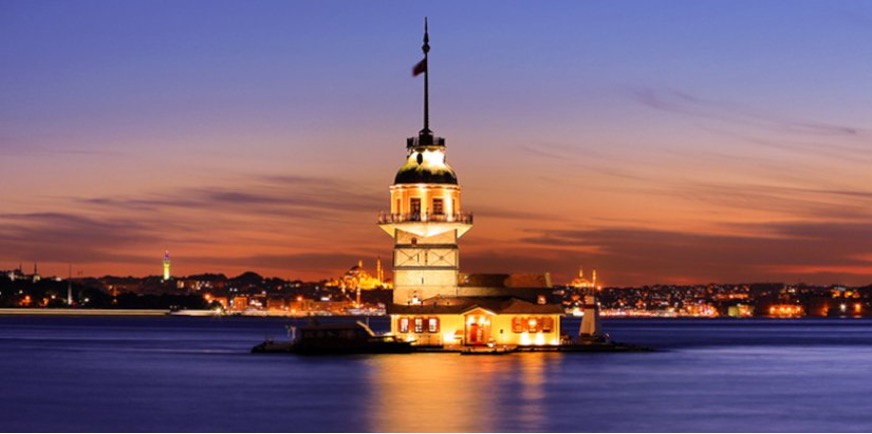
When you drive from Kadıköy to the Eastern direction along the Marmara sea , you reach the agglomeration centers of Bostancı, Maltepe and Pendik and then you arrive in the recreational centers of Tuzla and Bayramoğlu and Darica with its tea rooms, wonderful villas and cheap restaurants where you can eat Turkish specialities. The Turkish food culture is one of the most famous cultures worldwide and it is as famous as the French food or Chinese food, because the Turkish food culture was influenced by different cultures of the Ottoman Empire, which were parts of the same Empire. Near Tuzla and Pendik is the international Airport of Sabiha Gökçe , which you can reach with Airport buses from different places of the town.
THE PRINCES ISLANDS İN THE MARMARA SEA : (Enjoy the fresh sea air and spend a day on the islands) Don’t miss a trip to the Princes İslands in the travel program. They are situated in the South of Kadıköy . The most important islands are: Büyükada, and Heybeliada with its restaurants, tea rooms, beaches and wonderful villas, mosques and churches. Most churches are Orthodox ones. İt is forbidden to go by car to the islands, you have, however, the possibility to take a bicycle, a horse coach or you can walk.
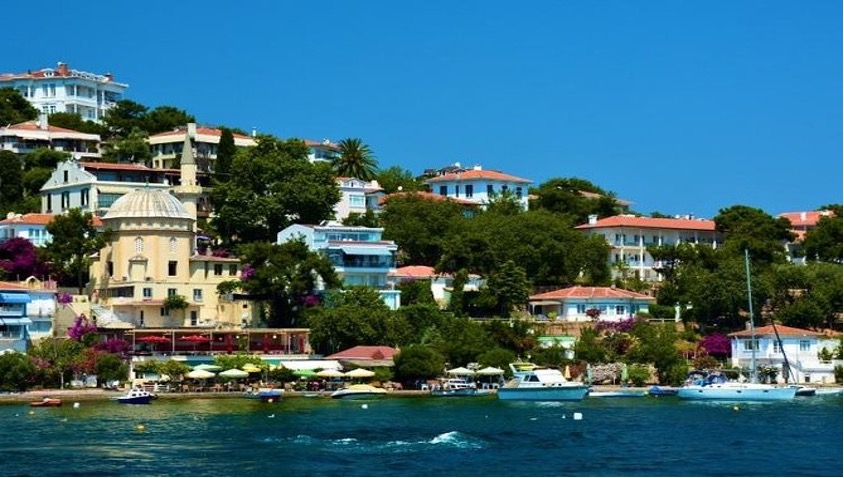
ŞİLE: If you drive 50 km from Üsküdar to the Black Sea coast to Şile, you will reach the picturesque beaches of Şile, where there are plenty of beach hotels, restaurants and cofees. Şile is a famous little town for producing airy dresses and shirts made of Şile linen.
